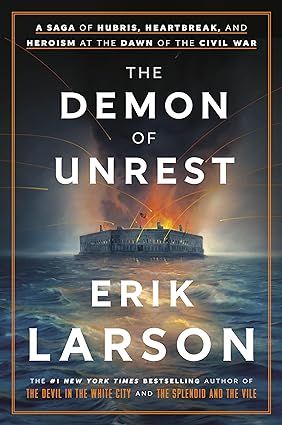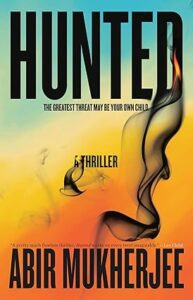
The period between Abraham Lincoln’s election and the start of the Civil War was a tumultuous time that ultimately divided a nation. In “The Splendid and the Vile,” Erik Larson masterfully brings this pivotal five-month period to life, highlighting the simmering crisis that tore a deeply divided nation apart.
Following Lincoln’s victory on November 6, 1860, the country found itself bitterly divided, with Southern extremists pushing for secession and Lincoln seemingly powerless to stop them. The issue of slavery fueled the conflict, but the focus of North and South converged on Fort Sumter, a lonely federal fortress in Charleston Harbor.
Larson’s narrative focuses on the chaotic months between Lincoln’s election and the Confederacy’s shelling of Fort Sumter. During this time, tragic errors, miscommunications, and personal ambitions exacerbated tensions. Key figures include Major Robert Anderson, commander of Fort Sumter and a former slave owner loyal to the Union; Edmund Ruffin, a radical secessionist stirring up fervor for secession; and Mary Boykin Chesnut, a conflicted Southern woman grappling with marriage and slavery.
At the center of it all is Lincoln, struggling with his duplicitous secretary of state, William Seward, as he tries to prevent the inevitable war that he fears will result in the deaths of hundreds of thousands of Americans. Larson’s narrative is based on diaries, secret communiques, and plantation records, offering a gripping account of the events that led America to the brink of war—a stark reminder of how catastrophes can unfold when warning signs are ignored.
DOWNLOAD
“The Demon of Unrest” by Erik Larson is a compelling exploration of the turbulent period between Abraham Lincoln’s election and the start of the Civil War. In this meticulously researched and vividly rendered narrative, Larson brings to life the simmering crisis that ultimately tore a deeply divided nation apart.
Set against the backdrop of a bitterly divided country, “The Demon of Unrest” delves into the political, social, and personal dynamics that characterized this tumultuous period. With a focus on key figures such as Abraham Lincoln, Major Robert Anderson, and Mary Boykin Chesnut, Larson offers readers a nuanced and multifaceted portrait of the events leading up to the Civil War.
Through a combination of diaries, secret communiques, and plantation records, Larson paints a vivid picture of the forces at play during this critical time in American history. From tragic errors and miscommunications to enflamed egos and craven ambitions, “The Demon of Unrest” captures the complexity and tension of a nation on the brink of war.
At its core, “The Demon of Unrest” is a cautionary tale about the dangers of division and the importance of understanding and empathy in times of crisis. As the nation grapples with its own challenges and divisions, Larson’s narrative serves as a timely reminder of the fragility of democracy and the need for vigilance in the face of unrest.
Overall, “The Demon of Unrest” is a compelling and thought-provoking read that sheds light on a critical period in American history. Through his meticulous research and engaging storytelling, Larson offers readers a fresh perspective on the events leading up to the Civil War, making this book a must-read for anyone interested in understanding the complexities of this pivotal moment in time.




